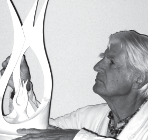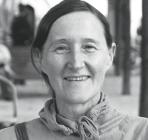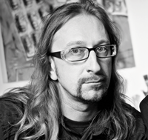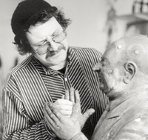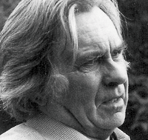Ernst Völkl
Barely 14 -year-old, Ernst Völkl began an apprenticeship (Lehre) in Manheim in 1942 as a wood and stone sculptor. At the same time he took the opportunity to take lessons at the Free Academy (Freien Akademie) in Mannheim under the tutelage of Carl Trummer. The consequences of the war made him a sought-after expert: in 1945, now just 17 years old, he worked intensively in his home region in the restoration of damaged monuments and churches. He was assigned with tasks that no sculptor at his age would have been assigned with in other times. They even advised him at the time of reconstruction. Thus arose - temporarily for the Archbishop's Building Department in Heidelberg - at the end of the 1940s to the early 1950s, numerous high-reliefs and sculptures. Völkl worked as a freelance sculptor from 1953 to 1972, during this time (1957) he gained his master title. With the subsequent change in the freelance work for well-known porcelain factories and bronze foundries, he opened himself up to the possibility of creatively working with other materials. Since then, in addition to designs and models to vases, bowls and services, numerous figurative sculptures were created in bronze. Here the animal representations played a very special role. Even as a young sculptor, Völkl visited lectures, not only in anatomy but also in zoology. The resulting knowledge greatly benefited him: as an "Animalier" of the utmost accuracy, Völkl proved to be an artist of the highest distinction.

